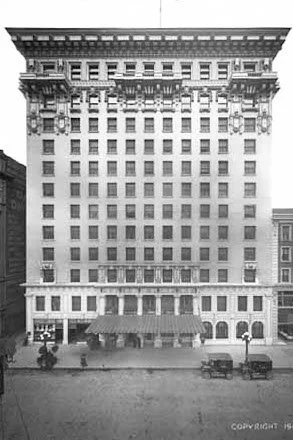The Controversial Cullen House
The unusual stone home at 698 Stewart Avenue in St. Paul seems slightly “off”. The mansard roof makes it feel a little squat and the dormer windows have a shape that looks newer than the rest of the house. It looks like a mixture of many architectural styles and, in this case, it is because this home has had many lives. It has been a VFW, the Blue Ribbon Club and even the Protestant Orphan Asylum. Before all of that, it was home to a very controversial person you’ve probably never heard of.
Major William J. Cullen was appointed the head of the Northern Superintendency of Indian Affairs in 1857. He was an administrator, communicating and overseeing the government agents who worked directly with the Dakota and Ojibwe. It was supposed to be the responsibility of the superintendent to see that the agents were following official government policy. It was his job to enforce treaties, deliver annuities (annual payments from the government to the tribes as payment for the land they sold) and act as negotiator between the government and the tribes.
He wasn’t very good at it.
When President Lincoln received many complaints from the tribes and white citizens alike about the treatment the Indian Agents were giving, he sent government representatives to investigate rumors of maltreatment and corruption. They reported back that: “The Superintendent Major Cullen alone, has saved, as all his friends say, more than 100 thousand in four years out of a salary of 2 thousand a year and all the Agents whose salaries are 15 hundred a year have become rich.” That is: even though Cullen only received a salary of $1500 per year, he had “somehow” amassed personal savings totaling over $100,000.
Cullen was stealing money from the tribes and making himself rich. Money that was supposed to go to starving and dying Dakota and Ojibwe was used to build his mansion in 1862.
The warnings to the government of the corruption were ignored and his abuse (and the abuse from many other government agents and white settlers) continued until the Dakota Uprising that same year. When the fighting started, Cullen accompanied Little Crow, one of the Dakota chiefs, as he tried to stop his own tribe from joining the fighting. Even Cullen recognized that the Dakota needed protection from the white settlers as much as the settlers needed protection from the Dakota.
It wasn’t enough.
Cullen was never prosecuted for his crimes or even admonished for stealing their treaty funds. Just three years after building his mansion, the Cullen family had already moved to a farm outside the city. He was then appointed to the post of Indian Agent for the tribes in Montana. He died only a few years later in 1870. He and his family are buried in the Oakland Cemetery.
Perhaps like a cat with nine lives, the home was salvaged again in the early 2000s and received a long and thorough restoration. Today, it is a private home.













